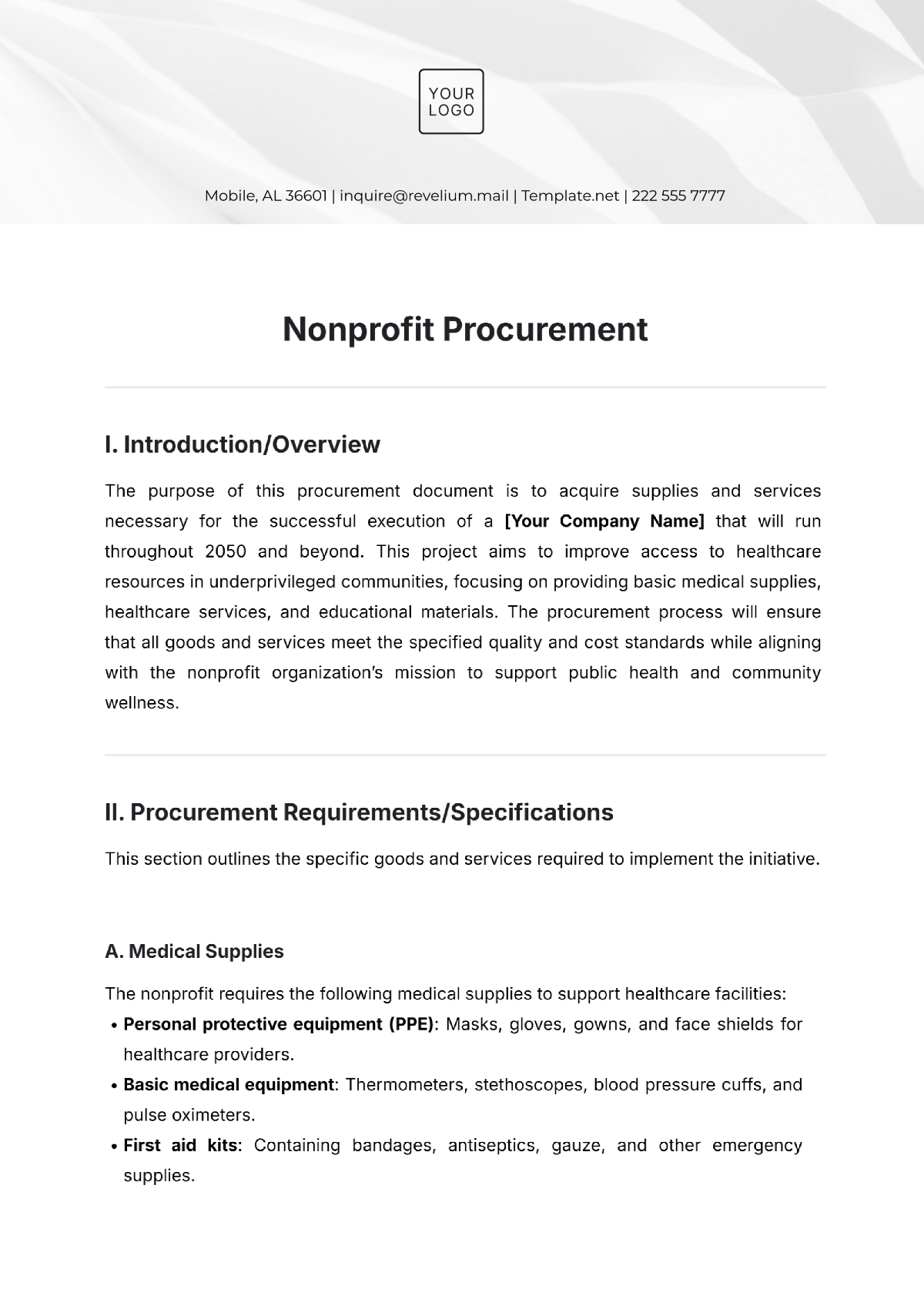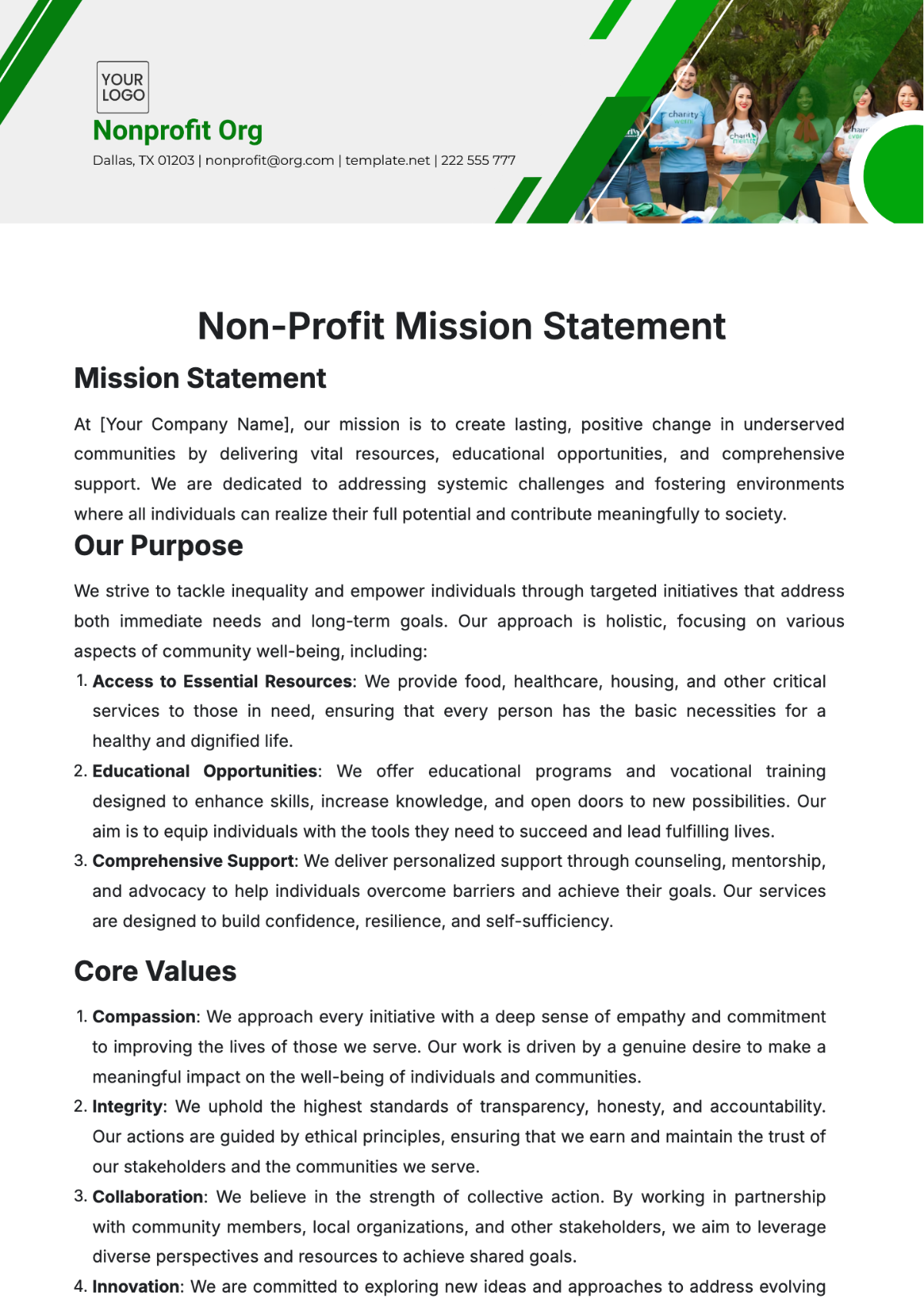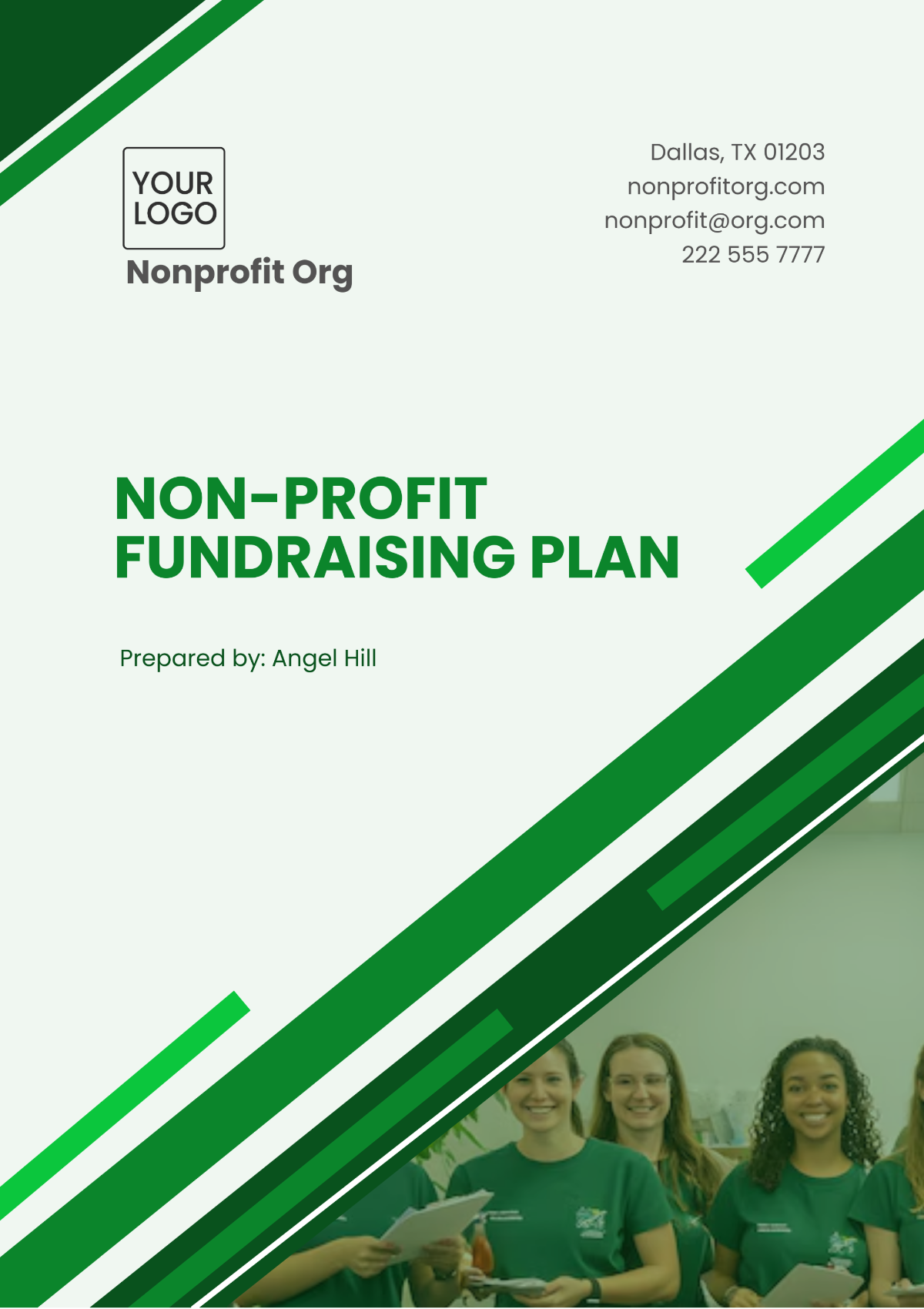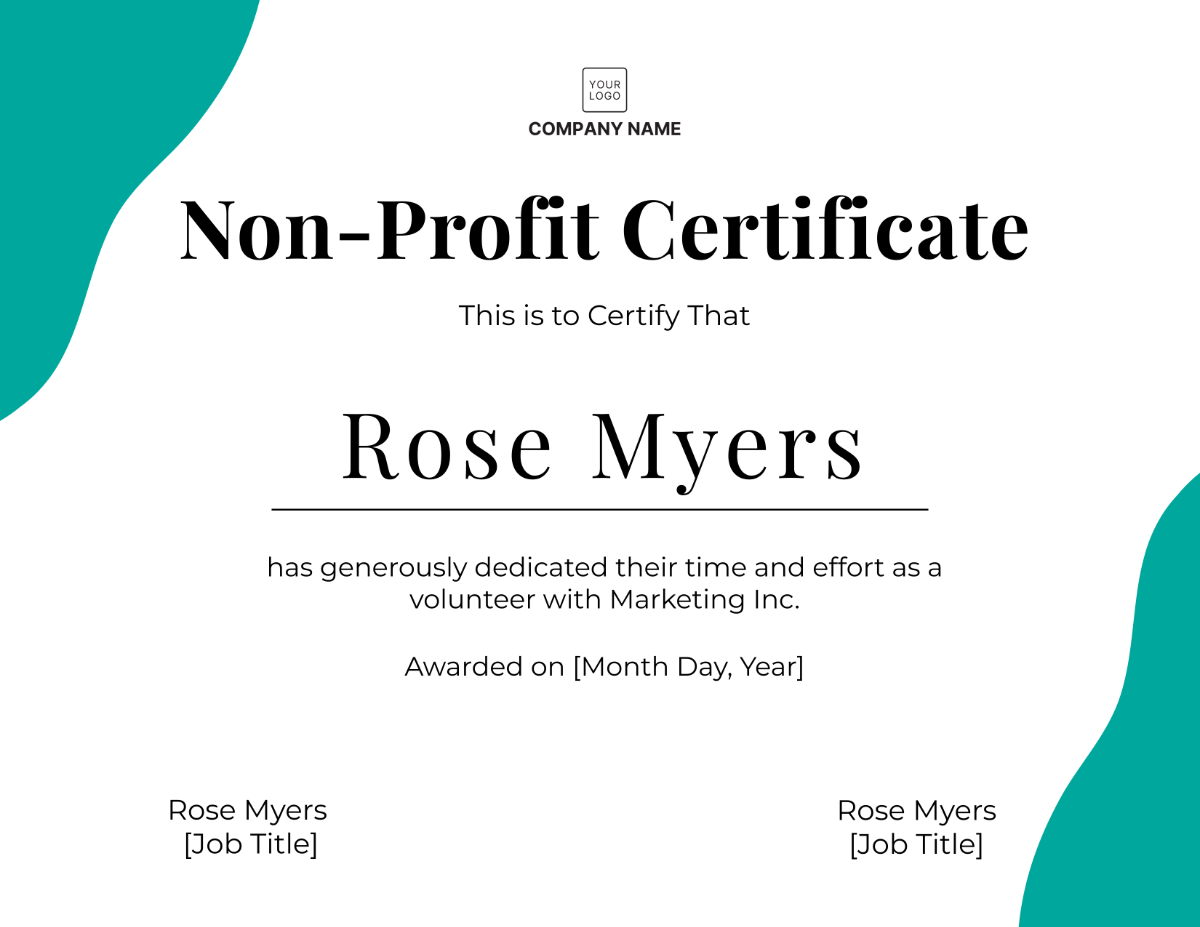Non-Profit Event Planning
I. Introduction
Non-profit event planning is essential for the success of any charitable organization. It involves meticulous preparation and execution to achieve various objectives such as raising funds, increasing awareness, and fostering community engagement. For [Your Company Name], effective event planning in the year 2050 and beyond means utilizing advanced technologies, sustainable practices, and innovative strategies to ensure every event meets its goals and leaves a lasting impact. This comprehensive guide will delve into each aspect of non-profit event planning in detail, covering every stage from initial conception to post-event analysis.
II. Goals and Objectives of Non-Profit Event Planning
A. Primary Goals
Raise Awareness
Raising awareness is crucial for any non-profit event. The event should effectively communicate the cause or mission of [Your Company Name] to a broader audience. This involves:Creating Impactful Messaging: Develop clear and compelling messages that convey the urgency and importance of the cause.
Utilizing Multiple Channels: Leverage various communication channels such as social media, press releases, and community outreach to spread the message.
Engaging Stories and Testimonials: Share real-life stories and testimonials from beneficiaries to create an emotional connection with the audience.
Generate Funds
Fundraising is often a primary objective of non-profit events. Successful fundraising requires:Setting Realistic Financial Goals: Determine a clear fundraising target based on the event’s scale and the organization’s needs. For instance, aim to raise [€50,000] through ticket sales, donations, and auctions.
Implementing Effective Fundraising Strategies: Use diverse strategies such as silent auctions, raffles, and donation stations to maximize contributions.
Tracking Donations: Ensure accurate tracking and reporting of all donations to maintain transparency and build trust with donors.
Engage Supporters
Engaging supporters is crucial for building long-term relationships. This involves:Interactive Activities: Incorporate interactive elements such as Q&A sessions, live polls, and breakout discussions to keep attendees actively involved.
Networking Opportunities: Create opportunities for attendees to network with each other, the organization’s leaders, and influential community members.
Feedback Mechanisms: Implement feedback mechanisms such as surveys and suggestion boxes to gather insights from supporters and improve future events.
Attract Sponsors
Attracting and retaining sponsors is essential for financial support and credibility. Key strategies include:Developing Sponsorship Packages: Create tiered sponsorship packages that offer various levels of exposure and benefits, such as Gold, Silver, and Bronze tiers.
Showcasing Sponsorship Benefits: Highlight the benefits for sponsors, including brand visibility, speaking opportunities, and media coverage.
Building Long-Term Relationships: Foster long-term relationships with sponsors by delivering on promises and recognizing their support publicly.
B. Secondary Objectives
Volunteer Recruitment
Events provide a platform to recruit new volunteers who can support future initiatives. To maximize volunteer recruitment:Showcase Volunteer Opportunities: Clearly outline available volunteer roles and responsibilities during the event.
Highlight Benefits: Emphasize the benefits of volunteering, such as skill development, community involvement, and networking opportunities.
Provide Easy Sign-Up Options: Offer simple and accessible sign-up methods, both online and on-site.
Building a Brand Presence
Building a strong brand presence helps enhance the organization’s visibility and reputation. Strategies include:Consistent Branding: Use consistent branding elements such as logos, color schemes, and taglines across all event materials and communications.
Media Exposure: Secure media coverage through press releases, interviews, and event highlights to increase brand recognition.
Engaging Content: Create and share engaging content related to the event on social media, blogs, and newsletters.
Networking and Partnerships
Events facilitate networking and partnership opportunities with other organizations and stakeholders. To leverage these opportunities:Invite Key Stakeholders: Invite influential community leaders, industry professionals, and potential partners to attend and participate in the event.
Facilitate Networking Sessions: Organize networking sessions or breakout rooms where attendees can interact and explore potential collaborations.
Follow-Up Engagement: Follow up with new contacts post-event to nurture relationships and explore partnership opportunities.
III. Event Planning Process
The event planning process involves several key stages, each crucial for ensuring the event’s success.
A. Initial Planning Phase
Define the Event's Purpose
Clearly defining the event’s purpose is essential for guiding all subsequent planning activities. This involves:Articulating Objectives: Document the specific objectives the event aims to achieve, such as fundraising targets, awareness goals, or volunteer recruitment.
Aligning with Organizational Goals: Ensure the event’s purpose aligns with [Your Company Name]'s overall mission and strategic goals.
Stakeholder Involvement: Involve key stakeholders in defining the event’s purpose to ensure it addresses their interests and needs.
Setting SMART Goals
SMART goals provide a clear framework for measuring the event’s success. Examples of SMART goals include:Increase Social Media Engagement: Achieve a [25]% increase in social media interactions related to the event within [6] months.
Raise Funds: Raise a minimum of [€50,000] through various fundraising activities by the end of the event.
Recruit Volunteers: Recruit [100] new volunteers who commit to supporting [Your Company Name] in the next year.
Expand Outreach: Reach [5,000] unique attendees or viewers through event promotions and activities.
Budgeting
A detailed budget is critical for managing event finances and ensuring cost control. Key components of budgeting include:Venue Costs: Allocate approximately [€5,000] for venue rental, including setup and teardown fees.
Marketing and Promotion: Budget around [€1,500] for online and offline marketing materials, including digital ads, flyers, and posters.
Staff and Volunteer Expenses: Set aside [€2,000] for staff and volunteer-related expenses, such as meals, transportation, and training.
Logistics and Equipment: Budget [€3,000] for technical equipment, including sound systems, lighting, and audiovisual support.
Contingency Fund: Reserve [10]% of the total budget for unforeseen expenses or emergencies.
Choose the Right Event Type
Selecting the appropriate event type based on the goals and audience is crucial. Options include:Fundraising Gala: A formal event featuring a dinner, speeches, and auctions, ideal for high-profile fundraising and donor engagement.
Virtual Conference: An online event that allows global participation and is suitable for sharing knowledge and raising awareness.
Outdoor Charity Run: A physical event that promotes health and community spirit, while raising funds through entry fees and sponsorships.
B. Execution Phase
Create an Event Plan
The event plan is a comprehensive document detailing every aspect of the event. Key elements include:Timeline and Milestones: Develop a detailed timeline outlining all key milestones and deadlines, from initial planning to post-event follow-up.
Task Assignments: Assign specific tasks to team members, ensuring clear responsibilities and accountability for each aspect of the event.
Vendor Coordination: Secure and manage contracts with vendors, such as caterers, decorators, and technical providers, ensuring they meet event requirements.
Identify and Book a Venue
Choosing and booking the right venue is crucial for the event’s success. Considerations include:Venue Capacity and Layout: Select a venue that accommodates the expected number of guests and supports the event’s layout and activities.
Accessibility: Ensure the venue is accessible to all attendees, including those with disabilities, and is conveniently located for easy access.
Technical Requirements: Verify that the venue provides necessary technical support, including audiovisual equipment, internet connectivity, and lighting.
Permits and Licenses
Obtaining the necessary permits and licenses is essential for compliance with local regulations. Examples include:Public Assembly Permits: Required for events held in public spaces or requiring special permissions from local authorities.
Food and Beverage Licenses: Needed if serving food or alcohol, depending on local regulations and the type of event.
Health and Safety Permits: Ensure compliance with health and safety regulations, particularly for large gatherings or outdoor events.
Sponsorship and Partnerships
Securing sponsorships and partnerships enhances the event’s financial and operational resources. Strategies include:Developing Sponsorship Proposals: Create detailed proposals outlining the event’s benefits for potential sponsors, including branding opportunities and audience reach.
Offering Diverse Sponsorship Packages: Provide various sponsorship levels, each offering different benefits and recognition opportunities.
Engaging Media Partners: Collaborate with media partners to promote the event through press releases, interviews, and media coverage.
C. Promotion and Marketing
Marketing Plan
A strategic marketing plan ensures effective promotion and audience engagement. Key components include:Social Media Strategy: Develop a social media campaign to generate excitement and drive attendance, using platforms such as Facebook, Twitter, and Instagram.
Email Marketing: Create targeted email campaigns to reach potential attendees, donors, and supporters, with personalized messages and event updates.
Press Coverage: Issue press releases and coordinate with media outlets to secure coverage and increase event visibility.
Create Event Branding
Effective event branding enhances recognition and conveys the event’s theme. Elements include:Event Logo and Visuals: Design a unique event logo and visual elements that align with [Your Company Name]'s branding and the event’s theme.
Event Materials: Develop promotional materials such as invitations, posters, and banners, incorporating consistent branding and messaging.
Event Merchandise: Offer branded merchandise, such as T-shirts and tote bags, to generate additional revenue and promote the event.
Utilize Influencers
Engaging influencers can amplify the event’s reach and impact. Strategies include:Identifying Relevant Influencers: Select influencers whose audience aligns with the event’s target demographic and mission.
Collaborating on Content: Work with influencers to create content that promotes the event and highlights its significance.
Leveraging Influencer Networks: Utilize influencers’ networks to extend the event’s reach and attract a broader audience.
Ticketing and Registration
Efficient ticketing and registration processes ensure a smooth experience for attendees. Key considerations include:Online Ticketing Platforms: Use platforms like Eventbrite or custom solutions for seamless ticket sales and registration.
Ticket Pricing Tiers: Offer various ticket levels, including early bird discounts, VIP packages, and group rates.
Registration Management: Implement systems for tracking registrations, managing attendee lists, and handling ticketing inquiries.
IV. Day-of-Event Execution
A. Event Day Operations
Team Coordination
Effective coordination on the event day is critical for smooth operations. Roles include:Event Manager: Oversees all aspects of the event, ensuring that everything runs according to plan and addressing any issues that arise.
Volunteer Coordinator: Manages volunteers, assigning tasks, providing support, and ensuring they are engaged and motivated.
Logistics Manager: Handles the setup and teardown of the event, including equipment, decorations, and seating arrangements.
Guest Management
Ensuring a positive guest experience is essential for the event’s success. Key aspects include:Registration and Check-In: Streamline the check-in process with dedicated stations and digital check-in options to minimize wait times.
Event Program Distribution: Provide guests with event programs that outline the schedule, key activities, and important information.
Guest Assistance: Have staff available to assist guests with any questions or needs during the event.
Engaging Attendees
Keeping attendees engaged throughout the event ensures a memorable experience. Strategies include:Interactive Elements: Incorporate interactive activities such as live demonstrations, audience participation games, and hands-on exhibits.
Entertainment and Performances: Feature entertainment such as live music, performances, or guest speakers to maintain interest and excitement.
Real-Time Updates: Use social media and event apps to provide real-time updates and engage attendees with live content.
Contingency Planning
Preparing for unexpected situations is crucial for managing any challenges that arise. Considerations include:Technical Issues: Have backup equipment and technical support on standby to address any audiovisual or IT problems.
Weather Contingencies: For outdoor events, arrange for tents or alternative indoor venues to accommodate inclement weather.
Health Emergencies: Ensure medical personnel or first-aid stations are available to handle any health-related emergencies.
B. Post-Event Follow-up
Thank-You Notes
Sending thank-you notes is an important step in acknowledging and appreciating support. Include:Personalized Messages: Send personalized thank-you notes to donors, sponsors, and volunteers, expressing gratitude for their contributions and support.
Event Highlights: Include highlights and outcomes of the event to show the impact of their support and involvement.
Recognition: Publicly recognize major contributors and supporters in newsletters, social media, and on the organization’s website.
Event Evaluation
Conducting a thorough evaluation helps assess the event’s success and identify areas for improvement. Key methods include:Attendee Surveys: Distribute surveys to attendees to gather feedback on their experience, including event content, logistics, and overall satisfaction.
Staff and Volunteer Feedback: Collect feedback from staff and volunteers to understand their perspectives and identify any operational challenges.
Sponsor Feedback: Request feedback from sponsors to assess their satisfaction and gather insights for improving future sponsorships.
Financial Reporting
Accurate financial reporting provides transparency and accountability. Key components include:Revenue and Expenses Report: Detail the total funds raised, including ticket sales, donations, and sponsorships, as well as all expenses incurred.
Budget vs. Actual Analysis: Compare actual expenses and revenues against the initial budget to evaluate financial performance and identify any variances.
Sponsor ROI Report: Provide sponsors with a report on their return on investment, including metrics such as media exposure, audience engagement, and event impact.
V. Sustainability in Event Planning
A. Environmentally Friendly Practices
Digital Invitations and Communications
Reduce paper waste by using digital invitations, RSVPs, and event updates. Benefits include:Cost Savings: Save on printing and postage costs by using electronic communication methods.
Eco-Friendly: Minimize the environmental impact by reducing paper consumption and waste.
Reusable and Eco-Friendly Materials
Opt for reusable materials and environmentally friendly options. Examples include:Decorations: Use reusable decorations such as fabric banners and digital screens instead of single-use materials.
Utensils and Supplies: Choose biodegradable or reusable utensils, plates, and cups for catering needs.
Local Sourcing
Source food, materials, and services locally to support the community and reduce the carbon footprint. Considerations include:Local Vendors: Partner with local vendors for catering, decorations, and supplies.
Farm-to-Table: Use locally grown produce and products to reduce transportation emissions and support local agriculture.
B. Energy Efficiency
Green Venues
Choose venues that prioritize sustainability and energy efficiency. Features to look for include:Renewable Energy: Opt for venues that use renewable energy sources such as solar or wind power.
Energy-Efficient Lighting: Select venues with energy-efficient lighting systems to reduce electricity consumption.
Eco-Friendly Transportation
Encourage attendees to use eco-friendly transportation options. Strategies include:Carpooling and Public Transit: Promote carpooling and public transit options to reduce individual car usage and emissions.
Biking and Walking: Encourage biking and walking for nearby attendees by providing bike racks and pedestrian-friendly access.
















































